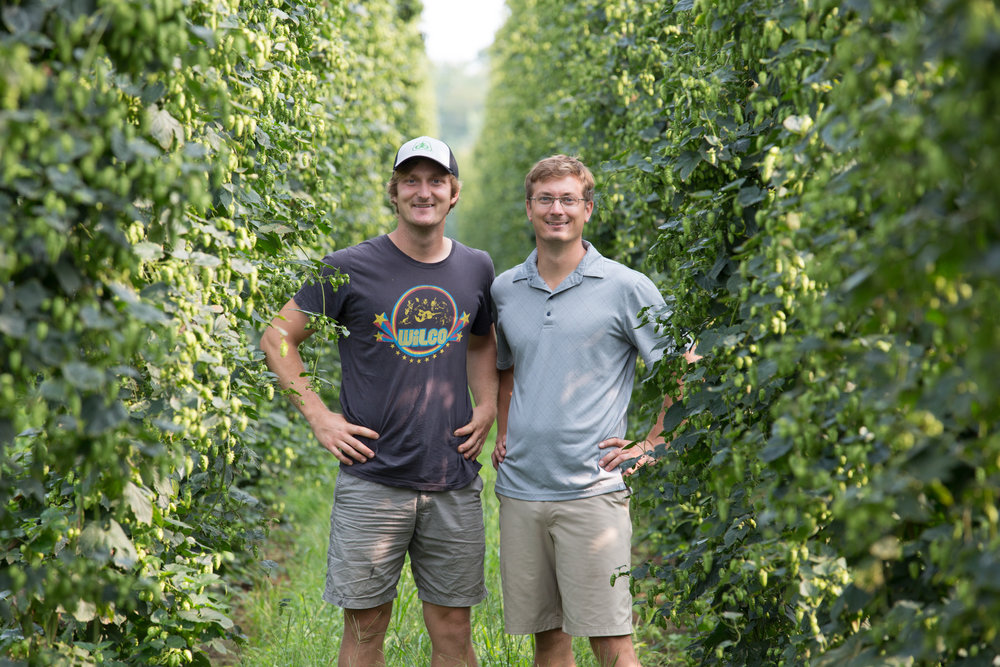In the February 2021 newsletter, we heard from Scott Hayhoe from Hayhoe Hops, near Alymer, Ontario.

OHGA: When did you start growing?
Scott Hayhoe: We started in 2014 with a 1/4 acre. We put in 3 acres in 2015, 3 more in 2016, and the final 4 in 2018.
OHGA: What varieties do you have, and how many acres?
Scott Hayhoe: We have 3 main varieties – Cascade, Centennial, and Chinook on 10 acres. At the end of 2020 we took out about half of our Centennial and plan on experimenting with up to 3 additional varieties in 2021.
OHGA: Why did you get into the hops industry?
Scott Hayhoe: We were looking for a niche crop that could be direct marketed, while not selling directly to the public.
OHGA: How did you come up with your hopyard name?
Scott Hayhoe: We picked our last name and then wrote hops after it.
OHGA: What is your favourite piece of equipment?
Scott Hayhoe: I really like our airblast sprayer. It has a large 600G tank on it and gets the job done well. For the majority of the growing season it is run weekly, so it’s great to have something reliable and efficient.
OHGA: What is the most challenging part of your hop business, and how are you dealing with it?
Scott Hayhoe: Like a lot of growers we battle brewer buy-in. While we grow and process a great hop, it is a challenge to get brewers to choose a locally produced Cascade hop over an imported Cascade hop. We’ve found the varieties we grow are used widely in the Ontario brewing industry, the adoption of the Ontario Hop industry is incredibly slow.
OHGA: Which pest/weed gives you the biggest headache, and how do you deal with it?
Scott Hayhoe: We battle grasses in portions of our yard. We will use Select, but only having one grass product application per season is a little thin.
OHGA: What has been a big lesson learned?
Scott Hayhoe: Never stop selling hops. Even when you feel you have an acceptable amount of your production sold, brewer’s needs can change, a beer brand can fall by the wayside, or a pandemic can arise. We thought when we started we would grow hops, find our customers, and they would buy hops. It turns out if you produce hops, you are always selling hops. Sounds obvious, but the reality of it is different than what we had anticipated. Not necessarily in an all bad way, but you better figure out a way to enjoy sales, because it’s part of the model on our scale.
OHGA: What’s the one issue that you would like advice from other growers on?
Scott Hayhoe: I’d love to hear how other growers manage their trellis structure maintenance. Some of our infrastructure has been out for long enough that a good inspection/maintenance program is likely needed. I would be glad to hear how others tackle this.
 Ontario Hop Growers' Association The OHGA is a not-for-profit association of hop growers, families and enthusiasts who are interested in supporting the growth of the hop industry in Ontario.
Ontario Hop Growers' Association The OHGA is a not-for-profit association of hop growers, families and enthusiasts who are interested in supporting the growth of the hop industry in Ontario.